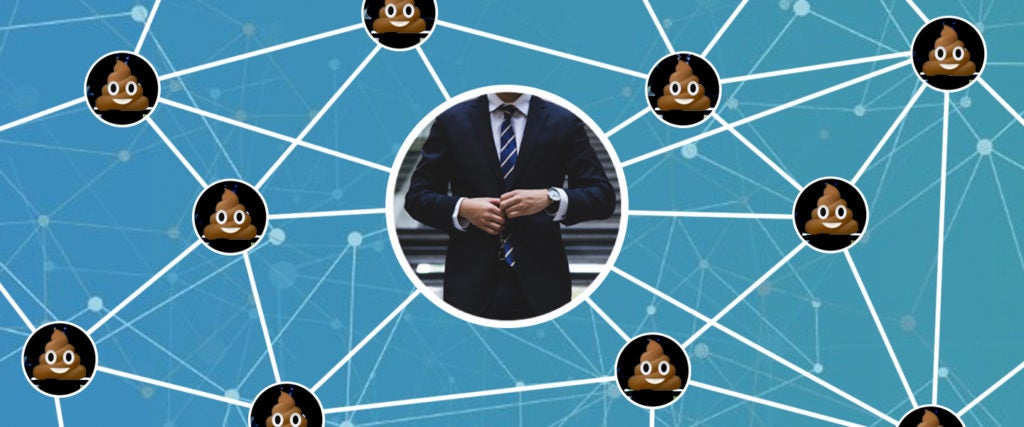While the pandemic has brought us many things, whether it be COVID-19 related television shows, Zoom fatigue or the ever-increasing reality that matching your clothes to your mask will most likely be important in the future, perhaps the most trivial development of coronavirus is the rise of the LinkedIn Dad essay. And to be honest, it’s what we deserve for making a networking site the key to employment in the year of our lord 2020.
Look, I get it. No one saw the coronavirus outbreak coming, least of all the business world. It only makes sense that LinkedIn would be the perfect place for workers and employers alike to compare stories about the chaos that is completely working from home. But then came the essays. Perhaps the most viral of the bunch, “New York Is Dead Forever,” ushered in a whirlwind of angry commenters, celebrity op-eds and general animosity toward a man who managed to sum up white flight as “why live in New York if my comedy club can’t have shows.”
But beyond the messy hubris of a clearly clickbait article, we have to acknowledge the unmistakable truth: This essay couldn’t have survived on any site other than LinkedIn. And we did that ourselves.
Created in 2003, LinkedIn was born out of perfectly good intentions. Everyone you know, like or know about has a job. Why not find a way to “connect” with them? While the site worked well for its original purpose, the advent of marketing, recruiting and advertising all worked together to build the employment monolith LinkedIn now exists as — a safe haven for Business Dads.
For working people in 2020, LinkedIn is one of those necessary evils, an amalgamation of photos and pithy resume summaries that determine whether or not you receive health insurance sometime in the near future. For students, it’s a chance to prove that college gave you something besides crippling debt and an Adderall dependency. But for Business Dads, it’s the absolute perfect storm. Facebook is already full of old high school classmates trying to convince you to join their multi-level marketing scheme and friends who are popping out engagement rings and small humans left and right; the last thing it needs is work acquaintances added to the mix. But where LinkedIn fails and allows Business Dads to thrive, is when it sells itself as real life.
As the popularity of social media has made consumers well aware of the perils of selling yourself online, most social media apps are now understood as a carefully constructed image of your daily life. No matter how good, honest or well-intentioned that image is, it will always be an attempt at snapshotting a reality, just not necessarily the most truthful version. LinkedIn and the Business Dads who thrive on it use the same advantages that other apps have — misinformation and exaggeration — but market them as the honest-to-god truth.
Who else would be demented enough to create a social media site where you pay to see who’s looking at you? Business Dads, that’s who. While hard to describe, the moniker of Business Dads is incredibly easy to pinpoint when you see it. Although the word “entrepreneur” personally sets off the biggest red flags for me, other common tropes involve “the degradation of the family” or in-depth LinkedIn stories about giving workers second chances that read just like Dickens fanfiction. They’re brash, loud, confident, and as much as they talk about the “business world,” you’ve never gotten a real understanding of what their actual job is. Business Dads create a persona that centers work as the highest form of purpose, then try to convince people that they’re just not working for the right person.
LinkedIn’s algorithm works best if you fully give up any pretense of being human. Instead of gross crockpot chicken recipes and crispy deep-fried memes, LinkedIn’s viral posts serve as an unwanted foil to the very necessary job pursuit, with posts from Business Dads sandwiched in between success stories from people you met during one cocktail hour, job postings you’re confident you won’t get and advertisements convincing you to go back to grad school. LinkedIn even goes so far as to select “LinkedIn influencers,” whose posts are dropped into your feed without warning. While these additions make LinkedIn such a tiring platform, they also act as physical hurdles, allowing only the truly excellent Business Dads to rise to the top.
So why did COVID-19 bring out the worst in LinkedIn?
As I said, no one could have predicted the outbreak. But in the ensuing months after the initial pandemic surge, it’s become increasingly apparent that the work lives we were fed as “normal” have never been sustainable. And in our “uncertain times,” Business Dads are no longer operating business as usual. Every facet of work has been disrupted, and with coronavirus making it clear that back to normal is still a long way coming, LinkedIn’s greatest influencers are given two options: 1) continue to spew the good vibes that built their online personas; or 2) pivot widely into stories of doom. It’s why all of the biggest cities are now being declared dead, forgotten, never coming back, simply because people no longer dedicate every waking moment to work.
The best thing about LinkedIn is that no one has to stay on it. While its networking opportunities help, it doesn’t truly matter if you’re currently employed. Even for those searching for jobs, LinkedIn connections can never really replace the ones you make in person. But if using LinkedIn is still important to you, remember that, just like you’re getting paid to work, Business Dads are getting paid to make themselves look better. And let’s be honest, there are much bigger things going on right now.

